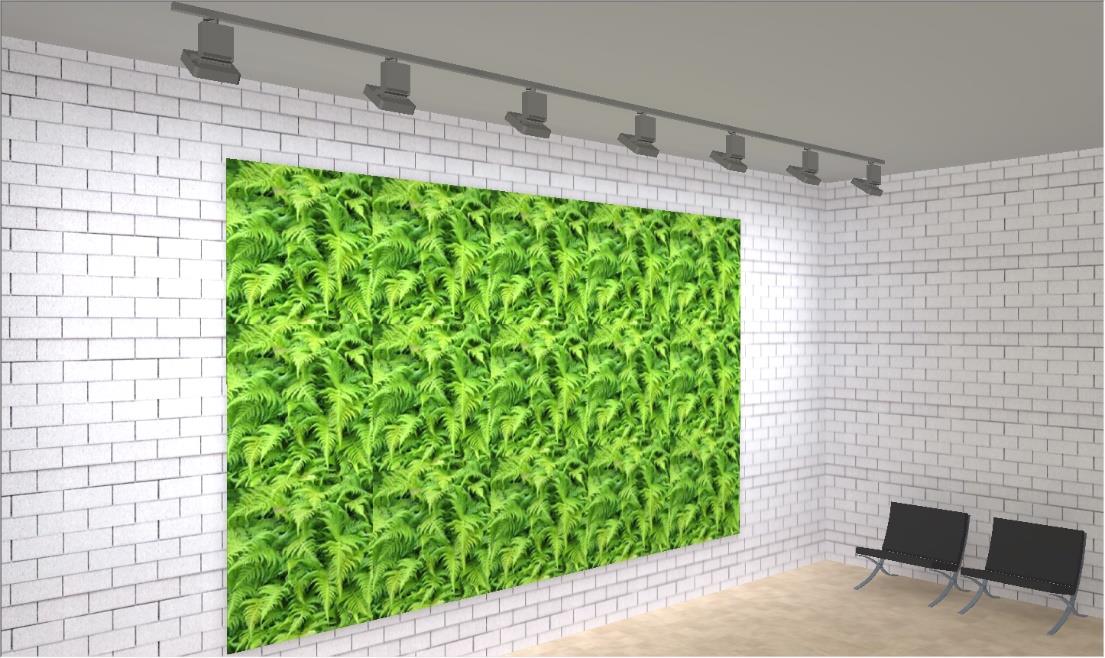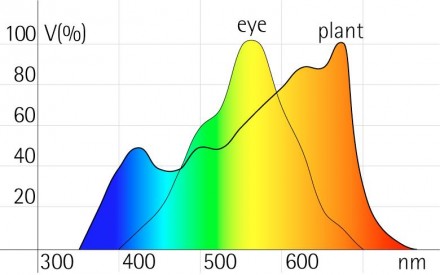Posted on: 11 - 5 - 2020
Learn the best practice for lighting green walls
Green walls are an impressive way to add life to a project, whether it be in a modern office setting or a retail space. There are special parameters to consider when lighting a living wall, but when executed correctly, they deliver a huge visual impact.
Our partners over at ERCO are here to share their expert knowledge with us. Continue reading our blog post below for a summary, or contact our team for a more detailed overview.

General Lighting Requirements of Green Wall Plants
Plants need to produce chlorophyll so that photosynthesis can take place to change light energy into food for life and growth. To produce chlorophyll, plants require light in the orange-red part of the spectrum around 640-660nm. For photosynthesis the requirement is in the blue part around 430-440nm. The green-yellow part of the spectrum is less important for plant growth, in fact most of these wavelengths are not absorbed but reflected by most plants. That's why most plants appear green. In order to achieve an appealing impression of an architectural Green Wall we should use full-spectrum light sources that generate white light.
Ultraviolet (UV) radiation is of minor importance for healthy Green Wall plants. There is a significant difference between horticultural lighting and the lighting of Green Walls. For horticultural lighting there is a need to achieve strong plant growth, whereas for Green Walls strong growth is not a desired outcome. Therefore, a higher content of UV or violet radiation in the spectrum is not necessary for Green Walls, it's even unwanted because it would cause the plants to grow too much, resulting in additional unwanted maintenance. It is preferable to preserve the Green Wall plants in a good healthy condition, without strong growth.
Infrared radiation is needed for flowering plants, but these are typically not used in architectural Green Walls, so this is also of minor importance for healthy Green Walls. Very strong infrared radiation is transmitted as heat which can potentially discolour leaves or even kill the plants.
Photosynthetically Active Radiation
The spectral sensitivity curve of human eyes in comparison to the spectral sensitivity of a plant is shown below:

Since most of the units that we use for describing the characteristics of light e.g. lumens and lux are based on the sensitivity of the human eye these units are not helpful for establishing proper lighting conditions for plant growth. For plants we need to consider Photosynthetically Active Radiation and the different units related to Photosynthetic Photon Flux:
| Light for Human Vision | Light for Plant Growth |
| Luminous Flux | Lumens | Photosynthetic Photon Flux (PPF) | micromoles per second (μmol/s) |
| Illuminance | Lux | Photosynthetic Photon Flux Density (PPFD) | micromoles per square meter per second (μmol/m2/s) |
The part of the spectrum that is important for photosynthesis in plants is called Photosynthetically Active Radiation (PAR). This is mainly the blue part around 430-440nm and the orange-red part around 640-660nm wavelengths. The metrics that are used for measuring PAR are Photosynthetic Photon Flux (PPF) and Photosynthetic Photon Flux Density (PPFD).
Recommended Values for Lighting Green Walls
Photosynthetic Photon Flux Density (PPFD):
- The minimum PPFD on the plants should not be less than 35.
- The Green Wall should be illuminated with very good uniformity, the min./max. illuminance ratio should be more than 0.33, and ideally more than 0.5.
Daily Light Integral (DLI):
- The necessary DLI and thus the required illuminance depends on the demands of the plants. As a typical range suitable for the most plants used in Green Walls, such as ferns the DLI should be between 1.5 and 4.0.
- At no point across the Green Wall should the DLI be less than 1.5. 30°
To learn how to calculate DLI and more, get in touch with our team to receive a detailed PDF.
Back to Blog